Boone House
Introduction
Text-to-speech Audio
Boone House is one of the oldest masonry residences in St. Petersburg and was placed on the National Register of Historic Places in 1986. The house was built by Benjamin T. Boone around 1919 in Colonial Revival architectural style. Boone was a developer in the early years of St. Petersburg's growth. The historical building was restored in April to June of 1985 by an architectural firm who established offices in the building. Boone House is now occupied by offices of General Accounting Systems. Behind the Boone House is a two-story wood frame and concrete block garage/apartment that was built on the property in 1920.
Images
Front of Boone House/General Accounting Systems offices in 2008 photo (Ebyabe)
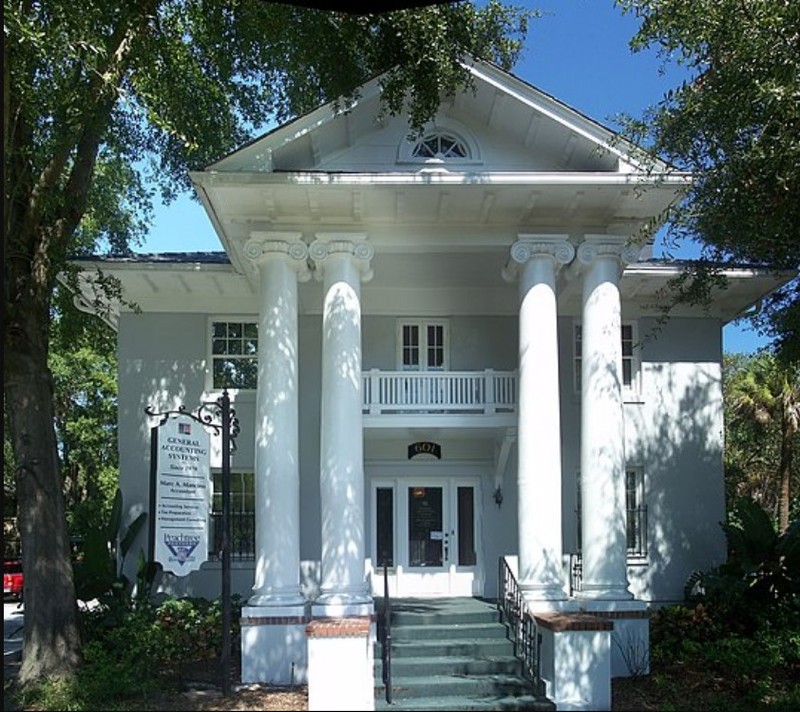
Front (south side) of Boone House in 1985 photo for National Register (Howard Hansen)
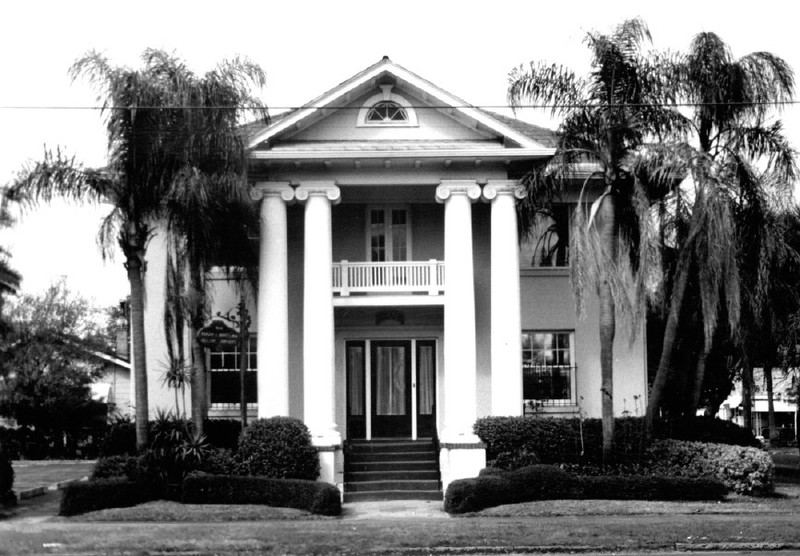
South and east sides of Boone House in 1985 photo (Hansen)
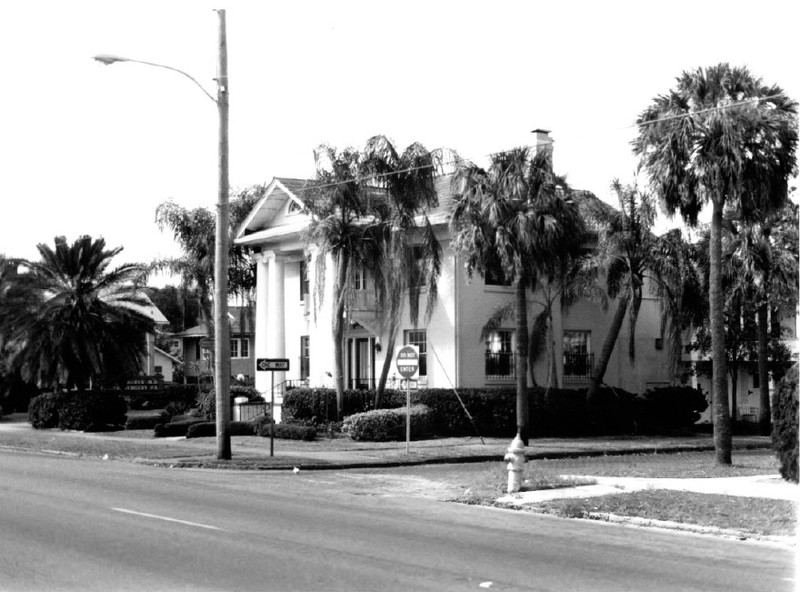
Boone House (green arrow) on 1952 Sanborn insurance map (Vol. 1 p. 21)
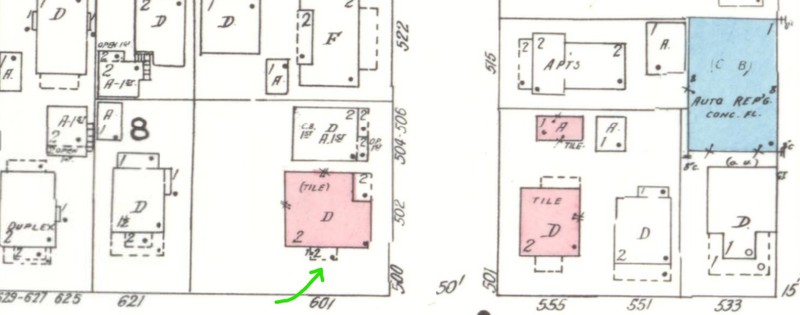
Garage/apartment behind Boone House on 6th St. N in 1985 (Hansen)
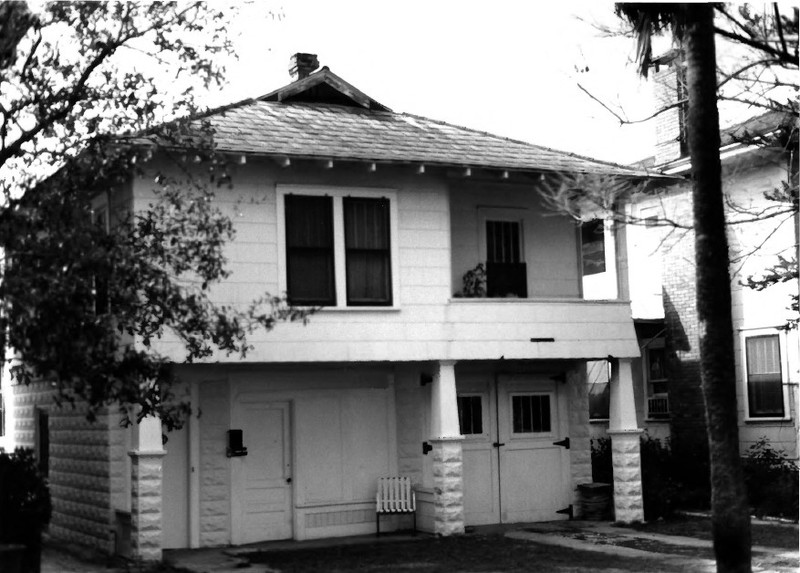
Backstory and Context
Text-to-speech Audio
Benjamin T. Boone (1865-1936) was a real estate developer in the early years of growth of St. Petersburg, before World War I. A North Carolina native, Boone moved to St. Petersburg in 1906, Boone served on the city's Planning Board from 1910 to 1914 and later as a Director of Ninth Street Bank until its failure in 1930. In 1888, the Boone House location was part of undeveloped land northwest of the edge of the town that was purchased by Anson Safford (1835-1891) and subdivided. In 1910, Boone purchased two blocks of the Safford land plus two blocks to the west from James D. Crouse. The four blocks, from Fifth Avenue N. to Seventh Ave. between Sixth and Grove Streets, was swampy land surrounding a small lake.
Early real estate records were not available for the area, and the Boone House was originally estimated to have been built in 1910, according to Pinellas County. However, or the first couple years, Boone was busy draining and filling the land so it could be developed with houses. Also, the house was not found on the 1913 or 1918 Sanborn insurance maps of the area. St. Petersburg saw its first building boom before World War I, from 1912 to 1917; forty miles of streets were paved in brick by 1917. Boone subdivided his four blocks and offered lots for sale in 1915 via the Hall Real Estate Company; the lots were advertised at around $500 to $1,000. Boone sold the lot including the Boone House location in January 1920 for $8,500; the high price suggests the house was already built, so 1919 is a reasonable estimate.
The main architectural feature of the Boone House was the entrance portico, with a pediment supported by four massive, two-story Ionic columns. The footprint of the house was square, and it was designed with a central entrance hall and a hipped roof. While many of the other local homes built in the 1910s were wood frame construction, the Boone House was made of brick. The new owner in 1920, David Pierce, took out a building permit in February 1920 to add a two-story garage at the rear of the lot. The 24-by-26-foot building was estimated to cost $2,000. The second story of the double garage was an apartment. Pierce was married to Flora Fenderson Pierce; the retired couple spent winters in the St. Petersburg house. When Mr. Pierce died in 1928, the Boone House passed to his heirs, who rented out the house from 1929 to 1941. The house was sold in 1941 to Henry I. and Helen Rhoades, who also rented out the home. An architect, Alfred Forrest, was a tenant in the Boone House from 1943 to 1949; Forrest kept an office on the first floor. When the Rhoades moved to St. Petersburg in 1949, they resided in the garage apartment temporarily until their tenant (bank president John H. Green) moved out of the house in 1951. Mr. Rhoades died in 1958 but Mrs. Rhoades continued to live in the Boone House until she passed away in 1972.
Rhoades heirs sold the house to a doctor, Edgar Buren, in 1974, who altered the house for his medical offices. In March 1985, the Boone House was purchased by Al and Anet Willingham. The Willinghams spent several months restoring and renovating; the house was then occupied by offices of an architectural firm, Willingham and Associates. The building had not been changed much since it was built, except for a new roof (asphalt shingles) in 1951 and modifications to the rear porch, kitchen, and two second-floor bedrooms. The building has housed offices of General Accounting Systems since the 2000s.
Sources
Florida Office of Cultural Heritage. Site Detail: Boone House, Florida Heritage Tourism Interactive Catalog. January 1st, 2007. Accessed November 2nd, 2023. https://web.archive.org/web/20070310170517/http://www.flheritage.com/services/sites/fht/record_t.cfm?ID=810&type=c&index=52.
Hansen, Howard. Primelles, Diana. NRHP nomination of Boone House, St. Petersburg, Florida. National Register. Washington, DC. National Park Service, 1986.
https://en.wikipedia.org/wiki/Boone_House_(St._Petersburg,_Florida)#/media/File:St._Pete_Boone_House_pano-tall02.jpg
National Park Service (NPS): https://npgallery.nps.gov/AssetDetail/NRIS/86001457
NPS: https://npgallery.nps.gov/AssetDetail/NRIS/86001457
Library of Congress (LOC): https://www.loc.gov/item/sanborn01343_009/
NPS: https://npgallery.nps.gov/AssetDetail/NRIS/86001457
